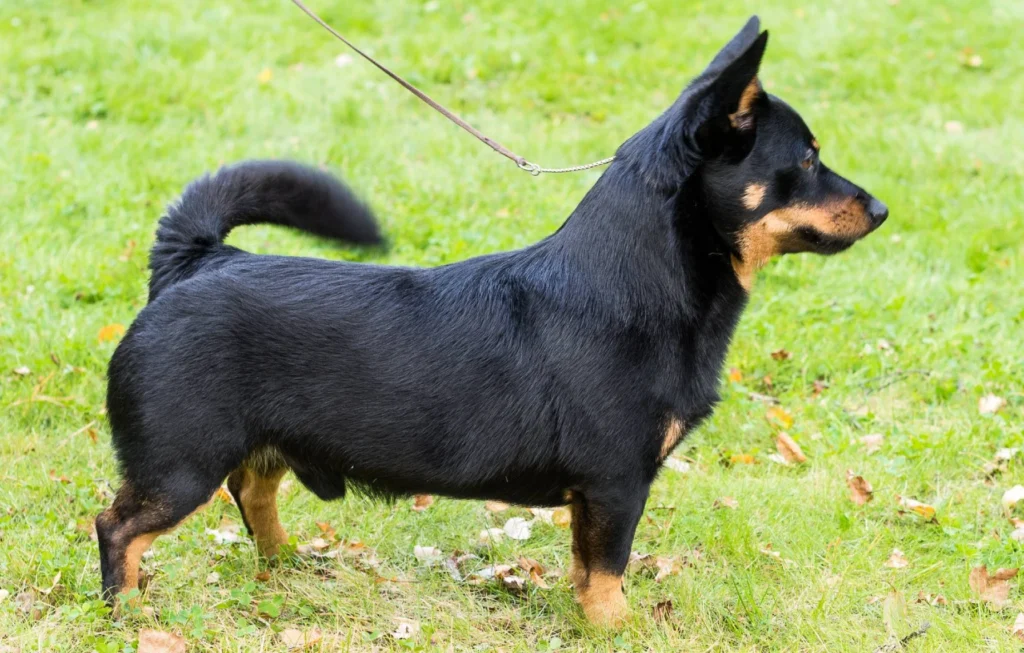Table of Contents

🐾 Lancashire Heeler Dog Breed: Characteristics and History
The Lancashire Heeler is a small yet sturdy dog breed known for its versatility, intelligence, and charming personality. Originally bred for herding and ratting, this breed has become a popular companion for families and individuals alike. Despite its diminutive size, the Lancashire Heeler is a dog full of energy and spirit, making it a beloved choice among dog enthusiasts. This article delves into the fascinating world of the Lancashire Heeler, exploring its history, physical characteristics, temperament, and much more.
📜 Short History
The Lancashire Heeler hails from the rural counties of England, particularly Lancashire, where it was developed as a working dog. Its origins date back to the 17th century when small, agile dogs were needed for herding cattle and controlling vermin. The breed likely descends from a cross between the Welsh Corgi and the Manchester Terrier, resulting in a dog that combined the herding abilities of the Corgi with the ratting skills of the Terrier.
Historically, the Lancashire Heeler was an invaluable asset on farms, where it excelled in moving cattle by nipping at their heels hence the name “Heeler.” Over the centuries, the breed remained relatively obscure, primarily known within its native region. However, in the late 20th century, efforts to preserve the breed led to its recognition by the Kennel Club in 1981. Today, the Lancashire Heeler is still considered a rare breed, but its popularity is gradually increasing among dog lovers who appreciate its unique qualities.
🐶 Quick Facts & Essential Details

| Category | Details |
|---|---|
| 🐾 Breed Name | Lancashire Heeler |
| 🐕 Other Names | Ormskirk Heeler |
| 🌍 Origin | England (Lancashire County) |
| 🏆 Recognized By | UKC, The Kennel Club (UK); AKC |
| 📏 Size Variants | Small |
| ⚖️ Weight Range | 9 to 17 pounds (4 to 8 kg) |
| 📐 Height Range | 10 to 12 inches (25 to 30 cm) |
| 🎂 Lifespan | 12 to 15 years |
🧥 Coat & Appearance
| Category | Details |
|---|---|
| 🧶 Coat Type | Short, dense, weather-resistant |
| 🎨 Coat Colors | Predominantly black and tan or liver and tan |
⚡ Energy & Personality

| Category | Details |
|---|---|
| 🔋 Energy Level | Moderate to high |
| 🐩 Breed Group | Herding (UK); not classified in AKC |
| 😍 Temperament | Alert, cheerful, spirited |
| 🏙️ Apartment-Friendly? | Yes – if exercised regularly |
| 🎓 Trainability | Intelligent but may be stubborn |
🏥 Health & Care Needs
| Category | Details |
|---|---|
| ⚠️ Common Health Issues | Primary lens luxation, patellar luxation, persistent pupillary membrane |
| ✂️ Grooming Needs | Low – occasional brushing needed |
| 🍂 Shedding Level | Low to moderate |
| 🏃 Exercise Needs | Moderate – enjoys walks and playtime |
👪 Suitability & Compatibility

| Category | Details |
|---|---|
| 🧑🤝🧑 Best For | Active singles, couples, or families |
| 🚫 Not Ideal For | Very sedentary homes |
| 🗣️ Barking Level | Medium – tends to bark at new stimuli |
| 👶 Good With Kids? | Yes – if socialized early |
| 🐕🦺 Good With Pets? | Usually – may chase small animals |
| 👶 First-Time Owner Friendly? | Fair – needs consistent leadership |
| ❄️ Weather Tolerance | Handles cooler climates well; needs shade in hot weather |
🎉 Fun & Extra Info
| Category | Details |
|---|---|
| 🌟 Famous Dogs of This Breed | Rarely seen in pop culture but beloved in rural English communities |
| 🧠 Intelligence Level | High – excels in agility and obedience |
| 😬 Common Behavioral Issues | Chasing, barking, boredom-related mischief |
| 🥩 Best Diet | Balanced dry food for small active dogs |
| 🛑 Foods to Avoid | Onions, chocolate, avocado, cooked bones |
| 🦴 Fun Fact | One of the UK’s rarest native breeds |
| 💰 Price of Puppy | $800 – $1,500 (when available) |
✅ Final Thoughts
The Lancashire Heeler is a small but mighty dog, filled with enthusiasm, loyalty, and charm. Perfect for active owners who want a smart and agile companion, this breed thrives in both city and countryside settings. With its unique history and joyful personality, the Lancashire Heeler makes a truly special family member.
🐕🦺 Dog Breeds Similar to Lancashire Heeler



The Pembroke Welsh Corgi is another small herding breed with a similar background. Like the Lancashire Heeler, it is intelligent, active, and has a strong herding instinct. Corgis are known for their distinctive appearance, with short legs and a long body, and they share the Heeler’s loyal and affectionate nature.
The Manchester Terrier shares the Lancashire Heeler’s terrier ancestry and is similar in size and appearance. It is a lively, intelligent breed that excels in activities requiring agility and speed. Manchester Terriers are also known for their strong prey drive, making them excellent at controlling vermin.
The Jack Russell Terrier is another small, energetic breed that shares the Lancashire Heeler’s love for activity and mental challenges. Known for their bold and confident personalities, Jack Russells are excellent companions for active individuals or families who enjoy outdoor adventures.
Conclusion
The Lancashire Heeler is a delightful and versatile breed that offers the best of both worlds: the energy and intelligence of a working dog combined with the affection and loyalty of a companion animal. Whether you’re looking for a small, active dog to join your family or a unique breed with a rich history, the Lancashire Heeler is worth considering. With proper care, training, and socialization, this breed can be a loving and loyal member of any household.
FAQs
Is the Lancashire Heeler a dangerous dog?
No, the Lancashire Heeler is not considered a dangerous dog. It is a small, friendly breed that is generally good-natured and well-behaved, especially with proper training and socialization. However, like any dog, it is important to manage its behavior, particularly its herding instincts, to prevent nipping.
Is the Lancashire Heeler a good guard dog?
While the Lancashire Heeler is alert and will bark to alert its owners of strangers, it is not typically considered a guard dog. Its small size and friendly nature make it better suited as a watchdog that will raise the alarm rather than confront intruders.


